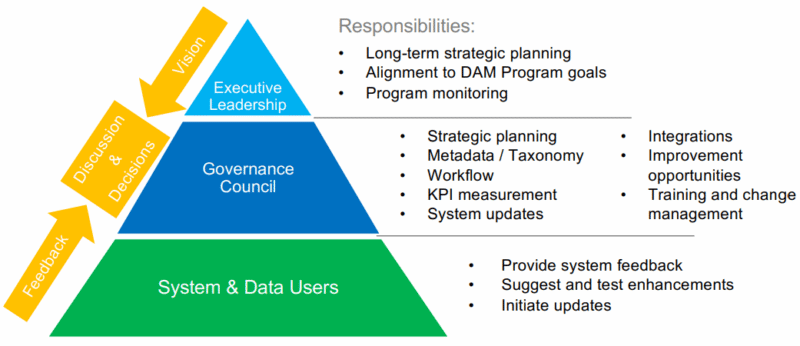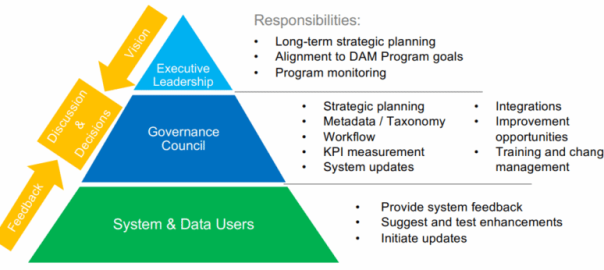A look at best practices for DAM governance, which call for three main tiers of stakeholders to manage and mitigate risk during implementation.
Governance is the key to ensuring that program goals are met during implementation of a digital asset management (DAM) system, as well as for future use of the system.
“Ultimately, it’s the only way to manage and mitigate risk for your DAM,” said John Horodyski, managing director for Salt Flats, and a MarTech contributor, in a session at The MarTech Conference. “And while governance is often misunderstood as a set of rules, it is so much more than that.”
Best practices for DAM governance call for three main tiers of stakeholders, described below. Each tier has different responsibilities and levels of influence on governance.
“It’s important to note that governance demands a cultural presence and footprint [in the organization], especially in global companies,” said Horodyski.

System and data users
These are the team members who are working in the DAM on a regular basis. They provide feedback on how well processes and workflow are going.
“They’re suggesting and testing enhancements to the DAM, and also updates,” Horodyski said.
Executive leadership
At the top of the governance structure are the executives.
“[The executives] are focused on long-term strategic planning alignment to any sort of DAM program goal, as well as monitoring the system,” said Horodyski.
Governance council
In the middle of the governance structure sits the governance council. They receive the goals from the executive leadership, as well as the feedback from DAM system users.
The governance council manages a full range of responsibilities related to DAM processes. These include strategic planning, metadata and taxonomy, workflow management, KPIs, system updates, integrations and DAM training.
Taken as a whole, this governance committee is essential to managing DAM implementation and updates. They are the people who make change possible and ensure that your organization’s DAM is adaptable for years to come.
In addition to people, here’s more information about the three other essential components of a flexible future-proof DAM:
It’s no simple thing to create, but it is more than worth it in both the short and long term.
The post How to structure digital asset management governance appeared first on MarTech.
(1)






